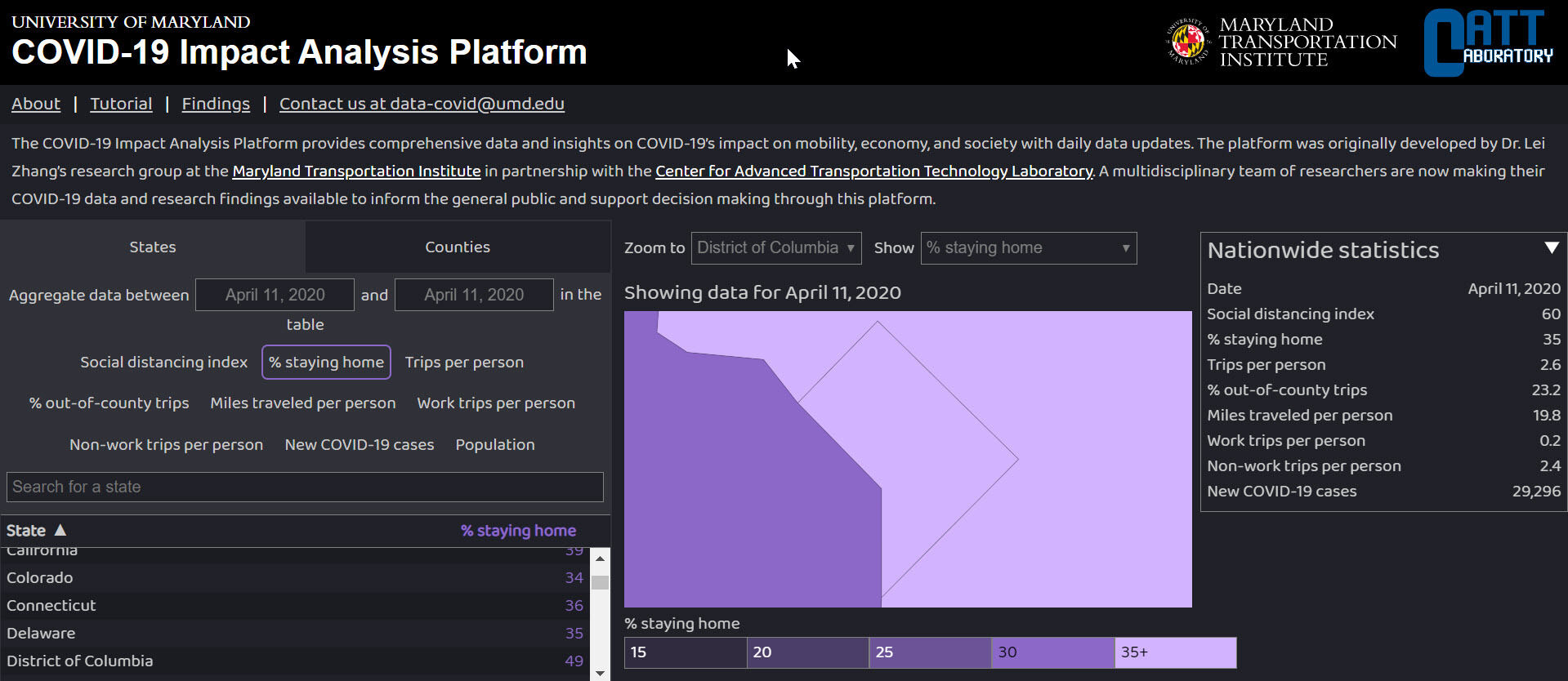
Many Americans are moving around and taking trips out of town despite widespread stay-at-home orders, data gathered by researchers at the University of Maryland suggests.
According to an interactive analytics tool assembled at the university, only 35% of people nationwide are staying at home.
“We define staying at home as a person who has not made any trips more than 1 mile away from their house,” said project leader Lei Zhang.
The average American has taken two such trips since the lockdown began, for work purposes or otherwise, with 23% of those being “out of county,” researchers determined.
Zhang said the research shows that orders from federal and state governments are having a positive, but limited, impact on behavior in some areas.
According to the analytics tool, the percentage of Americans staying home increased from 20% to 35% in mid-March but hasn’t changed much since then.
On average, a government order resulted in just a 4.3% change in behavior.
“We don’t see any further increase in the percentage of people who stay at home and conform to these orders,” Zhang said.
University researchers assembled the information using anonymized, aggregated location data from mobile devices dating back to January.
“User privacy is very well protected,” said Zhang. “We only publish results at the county and state levels in the U.S.”
Locally, the analytics tool shows that 49% of people in D.C. are currently staying home, among the highest share of residents for any state. That number is 39% in Maryland and 34% in Virginia.
The tool can break down the numbers before and after the local stay-at-home orders were issued on March 30.
For instance, on March 23 — a week before the orders — 54% were staying at home in the District, 36% were staying at home in Maryland and 33% were staying at home in Virginia.
A week after the orders were issued — on April 6 — 55% were staying at home in the District, 39% were staying at home in Maryland and 35% were staying at home in Virginia.
“Our goal is to not only produce new and compelling data, but to truly inform and support decision-makers,” said Zhang.
“Government agencies need to improve the effectiveness of physical distancing and stay-at-home orders by educating the general public, increasing enforcement, working with employers and communities, and supporting vulnerable populations.”
According to the research, the largest increase in the percentage of people staying at home during the week after a statewide was in New Jersey (13%), New York (11%), Illinois (11%), California (11%) and Michigan (10%).








